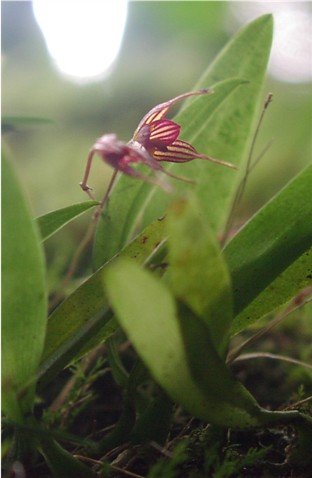
Shown is an in-situ photo of B. striatellum growing on moist moss covered boulder.
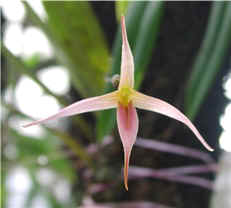
A species from Section Intervallatae characterised by closely clustered pseudobulbs and relatively long leaves. The flower stalk is very long and bears succesive flowers which are usually quite big. As you can see, the lip is very prominent.
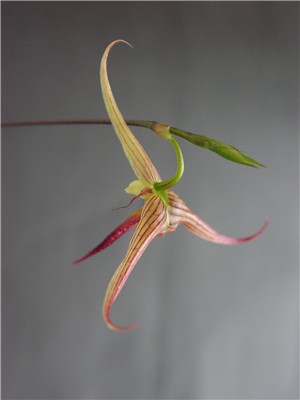

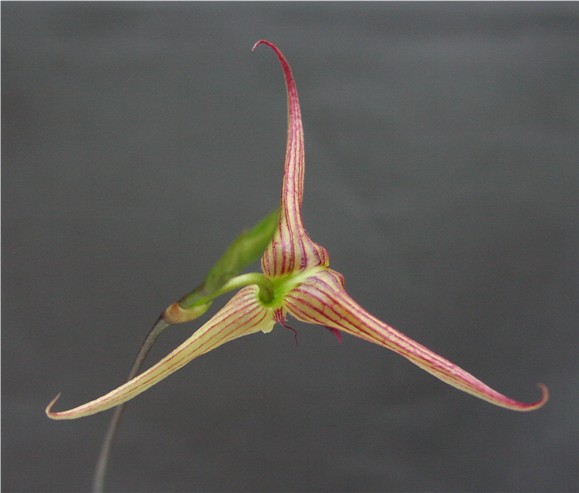
Side view of the bloom of Bulbophyllum digolense from PNG - the lip points to the left. (Section Intervallatae).
The photo below shows the small wiry petals and its large rough-edged lip.
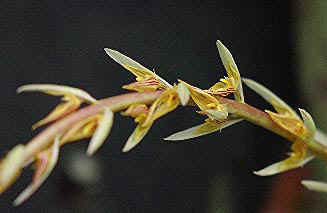
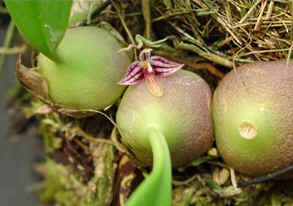

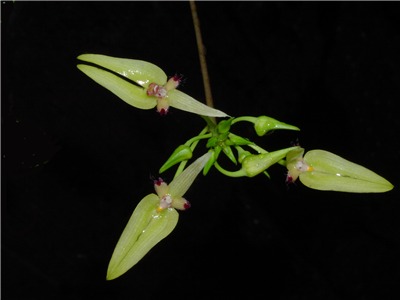
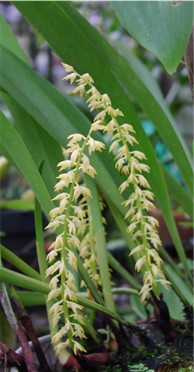
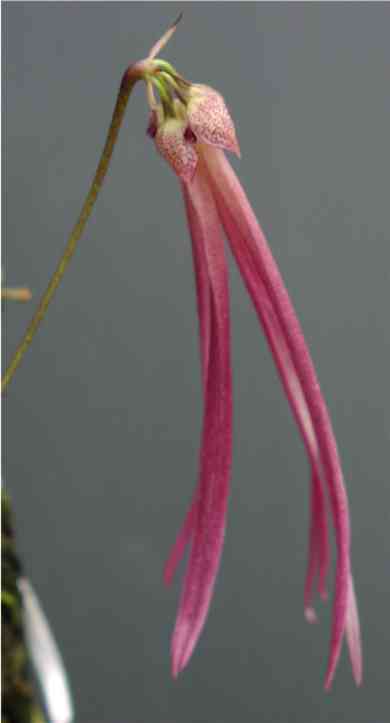
A relatively small plant with a long inflorescence about 8cm long (longer than the vegetative parts). The plant appears to self rather willingly and is a easy bloomer for me but the rate of vegetative growth is rather slow. Collectors have told me that in the wild, they do not become specimen size as the older bulb tend to die off. I have recently been shown a plant very similar to this collected from the lowland of East Johore, which would indeed be the first record of this species in Peninsula Malaysia.
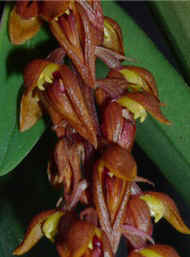
This rather large Thai Bulbophyllum from Section Careyanum have flowers that appear like bloody gaping mouths (complete with long tongues) each armed with a pair of sharp incisors.